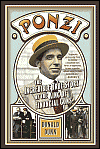 I’m naturally skeptical of most real estate gurus, with all that feel-good “You too can be rich!” talk and very little substance. Still, I was curious to see what was inside Robert Allen’s best-selling book Nothing Down for the 2000s: Dynamic New Wealth Strategies in Real Estate. As you’ve probably guessed, it’s supposed to be about getting rich by investing in real estate with none of your own money.
I’m naturally skeptical of most real estate gurus, with all that feel-good “You too can be rich!” talk and very little substance. Still, I was curious to see what was inside Robert Allen’s best-selling book Nothing Down for the 2000s: Dynamic New Wealth Strategies in Real Estate. As you’ve probably guessed, it’s supposed to be about getting rich by investing in real estate with none of your own money.
If you cut out the copious amounts of go-change-your-life fluff in this book, it boils down to two main ideas:
Buy below market price by finding a “don’t-wanter” seller. A “don’t wanter” is someone who is going through some sort of trouble so that they don’t have the time or ability (or intelligence) to get market value for their property. Maybe they can no longer support the payments and are almost in foreclosure. Or they are tired of property management headaches.
Use creative mortgages to buy the property with little or no down payment. Then sell for a profit. Lending ideas included:
- Getting the owner to finance the house, so you pay them a mortgage each month instead of the bank.
- Using interest-only mortgages to minimize the monthly payment while you try to flip the house.
- Do 110% financing where you borrow more than the value of the house, and take the rest out in cash to cover the down payment (or buy another property)
- Use a loan backed by Property #1 to buy Property #2.
- Use credit cards or signature loans from the bank as a down payment.
- Buy an apartment complex right before rent is due, and use the rent and security deposits as a down payment.


 [
[


 After reading their investing book
After reading their investing book 




 The Best Credit Card Bonus Offers – November 2024
The Best Credit Card Bonus Offers – November 2024 Big List of Free Stocks from Brokerage Apps
Big List of Free Stocks from Brokerage Apps Best Interest Rates on Cash - November 2024
Best Interest Rates on Cash - November 2024 Free Credit Scores x 3 + Free Credit Monitoring
Free Credit Scores x 3 + Free Credit Monitoring Best No Fee 0% APR Balance Transfer Offers
Best No Fee 0% APR Balance Transfer Offers Little-Known Cellular Data Plans That Can Save Big Money
Little-Known Cellular Data Plans That Can Save Big Money How To Haggle Your Cable or Direct TV Bill
How To Haggle Your Cable or Direct TV Bill Big List of Free Consumer Data Reports (Credit, Rent, Work)
Big List of Free Consumer Data Reports (Credit, Rent, Work)